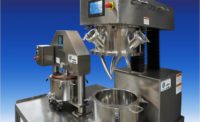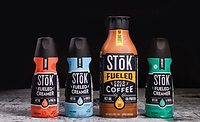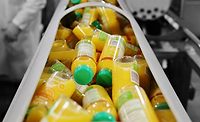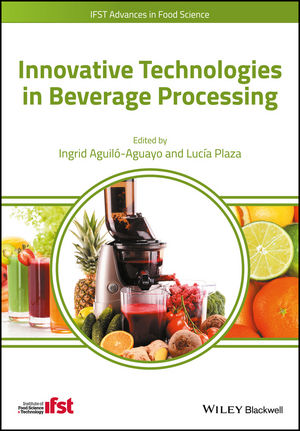Blend trends spark processing innovations
Sweeteners, flexibility influence processing automation

SensiBlend’s control system monitors and adjusts the blending process in real time by adding an in-line chemical analysis to volumetric proportioning.

Admix Inc.’s Boston Shearmill in-line mill allows processors to reduce the particle size of many beverage ingredients to achieve desired mouthfeel or viscosity targets without the addition of gums and stabilizers, the company says.




Efforts to lower the calorie counts in beverages have helped spark a number of innovations from many facets of the industry, including equipment manufacturers. As more beverage-makers look to take down the calories in their products through sweetener blend formulations, suppliers of processing automation equipment also are working to develop equipment to handle these new formats.
“The beverage industry is facing a whole new set of challenges: unique and expensive ingredients; more complex recipes and sweetener blends; shorter production runs; ingredient variability; and ultimately product quality issues — even [Food and Drug Administration (FDA)] regulations,” says Matt Glicken, vice president of sales and marketing for Wilmette, Ill.-based SensiBlend.
Glicken says that as beverage-makers explore using multiple sweeteners to reduce calorie content, the complexity of using numerous ingredients can cause consistency challenges with products.
“As companies are introducing stevia into their product mix, few are using just straight stevia — you have to blend it with other sweeteners to make an acceptable taste profile,” he says. “Some companies that we’re working with are using up to five sweeteners, including stevia, to make their final product, and because a lot of these concentrated sweeteners exhibit variability, for them to get the consistent blend batch after batch has proven to be a significant challenge.”
In order to help ensure consistency in complex formulation batches, Glicken recommends that concentrate manufacturers or bottling companies reduce challenges by turning toward in-line blending applications. Although the mixing technology has been available for years, more beverage manufacturers are taking notice of in-line blending as process complexity and raw material costs increase, he says.
“Many beverage producers are now looking toward continuous in-line blending equipment to improve efficiencies and reduce waste,” Glicken says. “While traditional mass-flow metering is an improvement over less advanced batch processes, these systems still have limitations. Variability in feedstocks is passed through to the end product, thus requiring extensive [quality assurance] testing to ensure final product quality. Blending large numbers of ingredients, particularly sweeteners, magnifies variability problems. In addition, mass-flow metering does not take into account human errors, such as connecting the wrong feedstock into the production process.”
As an alternative to traditional mass-flow metering systems, SensiBlend offers its customers a patented adaptive feedback control system that monitors and adjusts the blending process in real time by adding an in-line chemical analysis to volumetric proportioning. “SensiBlend controls, corrects and confirms product specifications and quality in-line, providing for consistent and reproducible products,” Glicken says.
“Instead of metering in the ingredients and relying on downstream quality assurance testing, the SensiBlend system uses process analytical technology (PAT) to instantly analyze inputs from sensors that measure pH, ultraviolet light and other variables to adjust ratios before releasing fluid flow,” he adds.
“Customers can program the system with a detailed chemical analysis of what constitutes a golden batch, and SensiBlend ensures these set points are met,” Glicken says. “As the line between beverage and drug regulation continues to blur, PAT enables FDA compliance for beverage manufacturers.”
Manchester, N.H.-based Admix Inc. also offers a number of in-line blending equipment options, such as DynaShear and the Boston Shearmill.
“The DynaShear in-line two-stage disperser offers processors ‘insurance’ that any product mixed in their conventional tank will be smooth, lump-free and fully dispersed after a single pass through it,” says Rick Earley, beverage market manager for Admix. “Our motto for it is, ‘Don’t filter out your expensive ingredients; disperse them with a single pass through DynaShear on the way to the next step in the process.’”
Earley adds that in-line emulsions also are produced with the unit on a single pass by blending the aqueous and oil phases together and passing the blend through the DynaShear, which can save time compared to adding small amounts of oil to a large amount of liquid in a tank.
The company’s Boston Shearmill in-line mill allows processors to reduce the particle size of many beverage ingredients to achieve desired mouthfeel or viscosity targets without the addition of gums and stabilizers, Earley says.
Flexible solutions
The expansion of SKUs is another trend the beverage industry has seen that has helped influence innovation of processing automation equipment. Health and wellness, natural and organic as well as functional formats are among some of the trends helping to expand the number of SKUs on the market.
“Several trends have resulted in new process investments,” says David McCarthy, president and chief executive officer of TriCore Inc., Racine, Wis. “As health awareness increases, products follow these desires. New products require new processes. Systems for vitamin-[enhanced] waters have been followed by systems for the production of cold tea-based beverages.
“We have also seen utilization of natural sugar versus [high fructose corn syrup] in the ingredient lineups,” he continues. “Energy drinks are still big, with new processes required for their production.”
Processes to address challenges with the formulation of different products include ease of changeover, clean-in-place (CIP) systems, allergen containment/management, reduced batch times and enhanced operating equipment effectiveness. As more new products and formulations develop, flexibility remains vital for beverage-makers and processing automation equipment.
“Flexibility is crucial,” McCarthy says. “The need to quickly configure new recipes, new cleaning profiles, new SKUs, new flavors, is all standard procedure from the modern beverage plant.”
Admix’s Earley says equipment that can be a “one-size-fits-all” system is a high-demand product for processors.
For dispersing dry mixes, Admix offers its Fastfeed in-line powder induction and dispersion technology, which allows processors to mix powders in-line as liquid is being filled into blend tanks. It also allows for direct induction from bulk bags to help eliminate manual bag dumping. Fastfeed can make batches as small as 30 gallons and as large as 30,000 gallons with no change-out parts, Earley says.
“Our Fastfeed powder induction and dispersion unit makes any size batch so [customers] don’t have to have expensive mixers in numerous tanks,” he adds.
Companies also are looking for ease of use with equipment. “They don’t want an operator to have responsibility for remembering to make a setting change, turn off a switch, etc.,” Earley says. “Fool-proof day-to-day and batch-to-batch processing should be built into the equipment’s performance.”
But when it comes to flexibility, integration into existing systems can be crucial for beverage-makers. “Producers are looking for flexibility in equipment integration, seeking ways to utilize or salvage existing equipment and/or components,” SensiBlend’s Glicken says. “SensiBlend allows for global technology transfer, enabling accurate and reproducible product on every production line at every production facility.”
In addition to the complete skid-based in-line blending systems, SensiBlend provides customers with upgrade and technology licensing options for existing in-line blending systems.
TriCore’s McCarthy also sees the importance of the integration trend, saying: “We see continued and intensified information integration between all aspects of business operations. Those companies that have invested in robust automation solutions continue to leverage their existing automation infrastructure for ever-increasing operating efficiencies. More adaptable, agile processing is clearly a trend we see continuing.”
Green practices
Although formulation challenges and flexibility are important for processing automation, equipment suppliers also understand the importance of sustainable practices, technology and products.
Earley says processors are not only looking for consistency from equipment, but also help to reduce water consumption and energy. “Our cleanable mixing technology allows processors to make product faster, better, safer [and] with less energy,” he says.
TriCore also is seeing more customers looking into sustainable technology in regards to CIP systems.
“There has been a big push on the processing side for green CIP technologies utilized for cleaning of processing equipment,” McCarthy says. “These would be typified by technologies such as Electrochemical Activation (ECA) systems, which are highly active, meta-stable solutions that are environmentally friendly and are used in place of traditional chemical cleaning systems.”
This technology, which requires integration with existing processing equipment and control systems, uses fewer chemicals, less water, and reduces energy costs and cleaning time, McCarthy says.
“For green initiatives, such as ECA, our control systems are highly flexible allowing new cycle types, steps, etc., without engineers reprogramming systems,” he says. “This makes introducing new technologies such as ECA much easier to implement.” BI
Looking for a reprint of this article?
From high-res PDFs to custom plaques, order your copy today!












